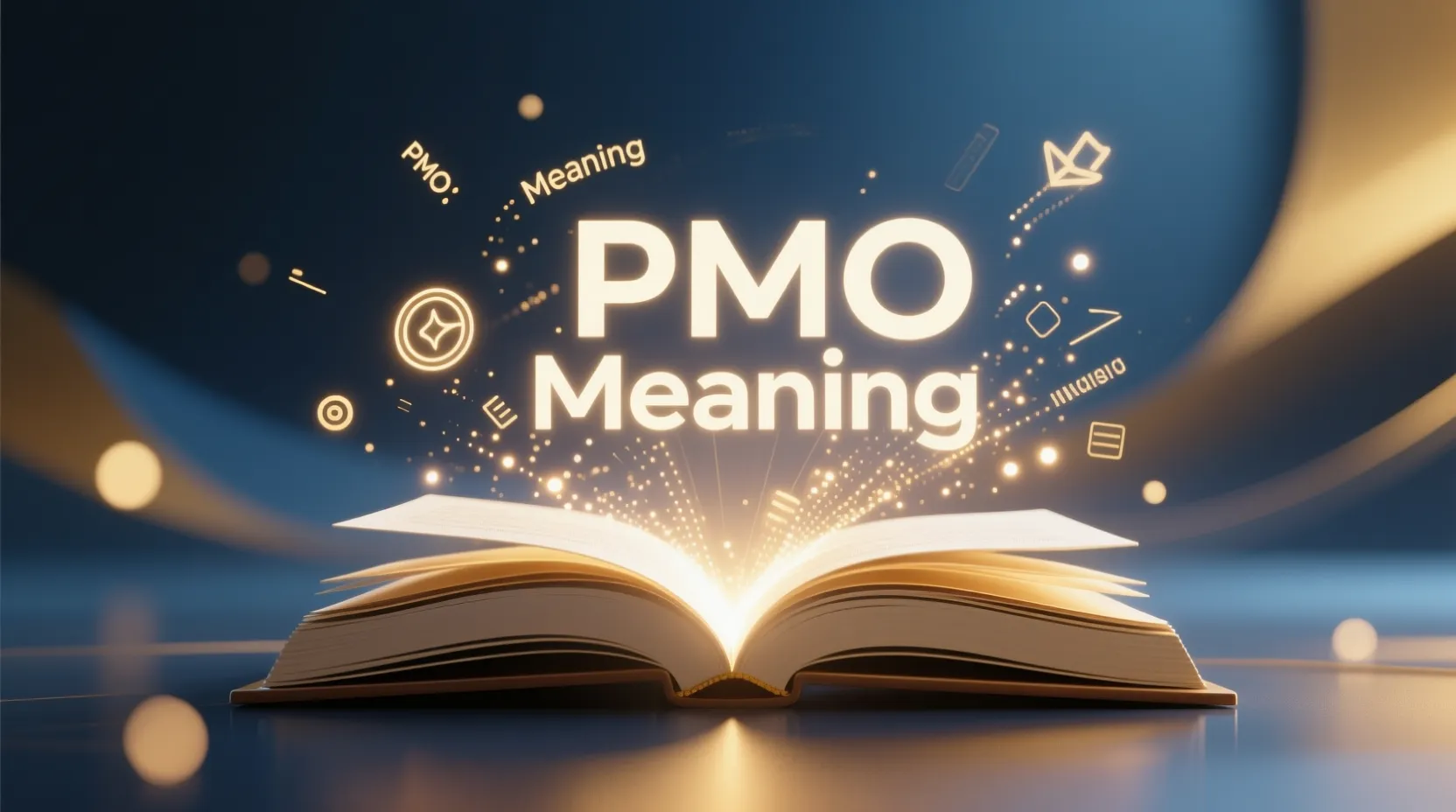If you’ve ever scrolled through TikTok, Snapchat, or Instagram and seen someone type “PMO,” you might’ve been left scratching your head. Does it mean Pissed Me Off? Or Put Me On? And then, in the corporate world, PMO means something completely different—Project Management Office.
This guide breaks down every angle of PMO meaning—from slang in texting and social media to its role in business strategy and project success. By the end, you’ll be able to confidently understand, explain, and use PMO in any context.
PMO Meaning in Texting and Slang
In casual conversations, PMO is a short form that changes meaning depending on context.
- Put Me On → Asking someone to introduce or connect you to something cool.
- Pissed Me Off → Expressing frustration or anger.
Both meanings are widespread online, and the difference usually depends on tone.
PMO in Text Messages
When someone texts “PMO”, it often means:
- Put Me On → “PMO with that playlist” (share songs).
- Pissed Me Off → “That guy really PMO today.”
It’s highly contextual, so always read the surrounding conversation.
PMO Meaning on TikTok
TikTok creators often use PMO in captions, skits, and comments. Examples:
- “Someone PMO with that new filter 🔥” (Put Me On).
- “When the algorithm PMO again 😤” (Pissed Me Off).
TikTok slang evolves quickly, but PMO meaning in TikTok slang usually stays within these two interpretations.
PMO Meaning on Snapchat and Instagram
On Snapchat, friends might DM:
- “PMO in your story, where’s that place?” (Put Me On).
On Instagram, you’ll see captions like:
- “These vibes PMO fr.” (Pissed Me Off).
PMO in Urban Dictionary
Urban Dictionary, the go-to for decoding internet slang, lists PMO with both main definitions:
- Put Me On
- Pissed Me Off
Because slang is constantly evolving, you might also find creative takes, but these two remain the most widely used.
Variations of PMO in Slang
Beyond the basic meaning, PMO gets paired with other abbreviations:
- TS PMO → “The Same, Put Me On” or “That Sh*t Pissed Me Off” (varies by usage).
- ICL TS PMO → “I Can’t Lie, That Sh*t Pissed Me Off.”
These combos are most common among Gen Z conversations on Snapchat, TikTok, and Twitter/X.
PMO Meaning in Business
Switch gears from slang, and PMO in business refers to the Project Management Office—a structured unit within an organization that drives project success, governance, and efficiency.
PMO Definition
A Project Management Office (PMO) is a centralized team or department responsible for:
- Defining project management standards
- Providing project documentation and templates
- Ensuring project governance and alignment with organizational strategy
- Tracking project success rates
According to PMO Global Institute Inc. (PMOGI), over 71% of businesses worldwide now have or plan to establish a PMO.
PMO Objectives
A well-functioning PMO focuses on:
- Project efficiency
- Resource allocation
- Stakeholder communication
- Project monitoring & reporting
- Risk management
- Strategic alignment with business goals
PMO Types
Different organizations establish different types of PMOs depending on scale and focus:
- Program Management Office (PgMO) – oversees multiple related projects.
- Portfolio Management Office (PfMO) – manages entire project portfolios for strategy alignment.
- Project Support Office (PSO) – provides tools, templates, and documentation.
- Project Controls Office (PCO) – handles project monitoring and KPIs.
- Delivery Management Office (DMO) – ensures projects are delivered on time and within scope.
- Change Management Office (CMO) – specializes in change management strategies.
- Product Management Office – supports product lifecycles and launches.
- Internal PMO vs External PMO – internal for in-house governance, external when outsourced to consultants.
Core Functions of a PMO
The PMO role extends beyond oversight—it actively drives project outcomes.
- Support Services → Training, project templates, and best practices.
- Transparency Services → Dashboards, reporting, and visibility.
- Traceability Services → Tracking deliverables and dependencies.
- Governance Services → Enforcing project management standards and compliance.
PMO Categories by Organizational Hierarchy
Depending on where it sits in a company, a PMO takes different forms:
- Enterprise PMO (EPMO) – aligns with corporate strategy & PMO priorities.
- Departmental/Divisional PMO – supports specific functions like IT or HR.
- Project-specific PMO – created for one large initiative (often temporary).
PMO Examples in Real Organizations
- IT PMOs → 86% of IT companies run PMOs to ensure alignment with fast-paced tech projects.
- Healthcare PMOs → 59% use PMOs to track compliance and patient care initiatives.
- Construction PMOs → 72% manage cross-functional, large-scale builds.
- Finance PMOs → 66% monitor risk, regulations, and investment portfolios.
- Government PMOs → 67% ensure transparency and governance.
PMO Software and Tools
Modern PMOs rely on project management software tools:
- Baseline PMO software for standards and templates.
- Dashboards & automation to improve reporting.
- Agile project management tools like Jira, Trello, or Asana.
- AI-driven PMO software for predictive risk management and real-time KPIs.
These tools boost project success rates by improving visibility, resource allocation, and collaboration.
PMO Certification and Membership
Professionals who want to build a career in PMO can pursue:
- PMO certification via PMO Global Institute Inc.
- PMP (Project Management Professional) certifications from PMI.
- Business alignment training and leadership development in PMO.
- Joining PMO membership communities for networking and best practices.
PMO Challenges
Not all PMOs succeed. Common challenges include:
- Resistance to change within organizations.
- Role ambiguity between PM vs PMO.
- Lack of standardization in methodologies.
- Unrealistic expectations from executives.
- Limited maturity in portfolio management.
PMO ROI and Benefits
The benefits of a PMO are measurable:
- Increased project success rates.
- Better resource allocation.
- Stronger stakeholder communication.
- Improved organizational strategy alignment.
- Enhanced risk management.
PMO ROI often comes from fewer project failures and higher efficiency across portfolios.
PMO vs Project Manager
One of the biggest misconceptions: PMO ≠ Project Manager.
- PMO = oversees governance, processes, tools, alignment.
- Project Manager (PM) = executes an individual project.
Think of PMOs as the “coach” and Project Managers as the “players” executing the game plan.
The Future of PMO
The future of PMO is evolving rapidly:
- Agile & Hybrid PMOs → blending traditional and agile project management.
- AI & Automation → dashboards predicting risks and improving KPIs.
- Collaborative Governance → cross-functional leadership.
- Benefits Realization → focusing on long-term outcomes, not just deliverables.
- Digital Transformation → PMOs as enablers of organizational change.
Quick Comparison Table – PMO Meanings
| Context | PMO Meaning | Example Usage |
|---|---|---|
| Texting/Slang | Put Me On / Pissed Me Off | “Bro, PMO with that playlist” |
| TikTok | Put Me On / Pissed Me Off | “That filter PMO fr” |
| Snapchat/IG | Put Me On / Pissed Me Off | “PMO in your story, send details” |
| Business | Project Management Office | “Our PMO oversees enterprise projects” |
| Variations | TS PMO, ICL PMO | “ICL TS PMO, I agree” |
Conclusion
PMO meaning depends on context. On TikTok, Instagram, or Snapchat, it usually means Put Me On or Pissed Me Off. But in the corporate world, PMO full form is Project Management Office—a crucial structure for improving project success, governance, and alignment with business strategy.
From slang to strategy, understanding PMO helps you navigate both casual conversations and professional environments without missing a beat.



